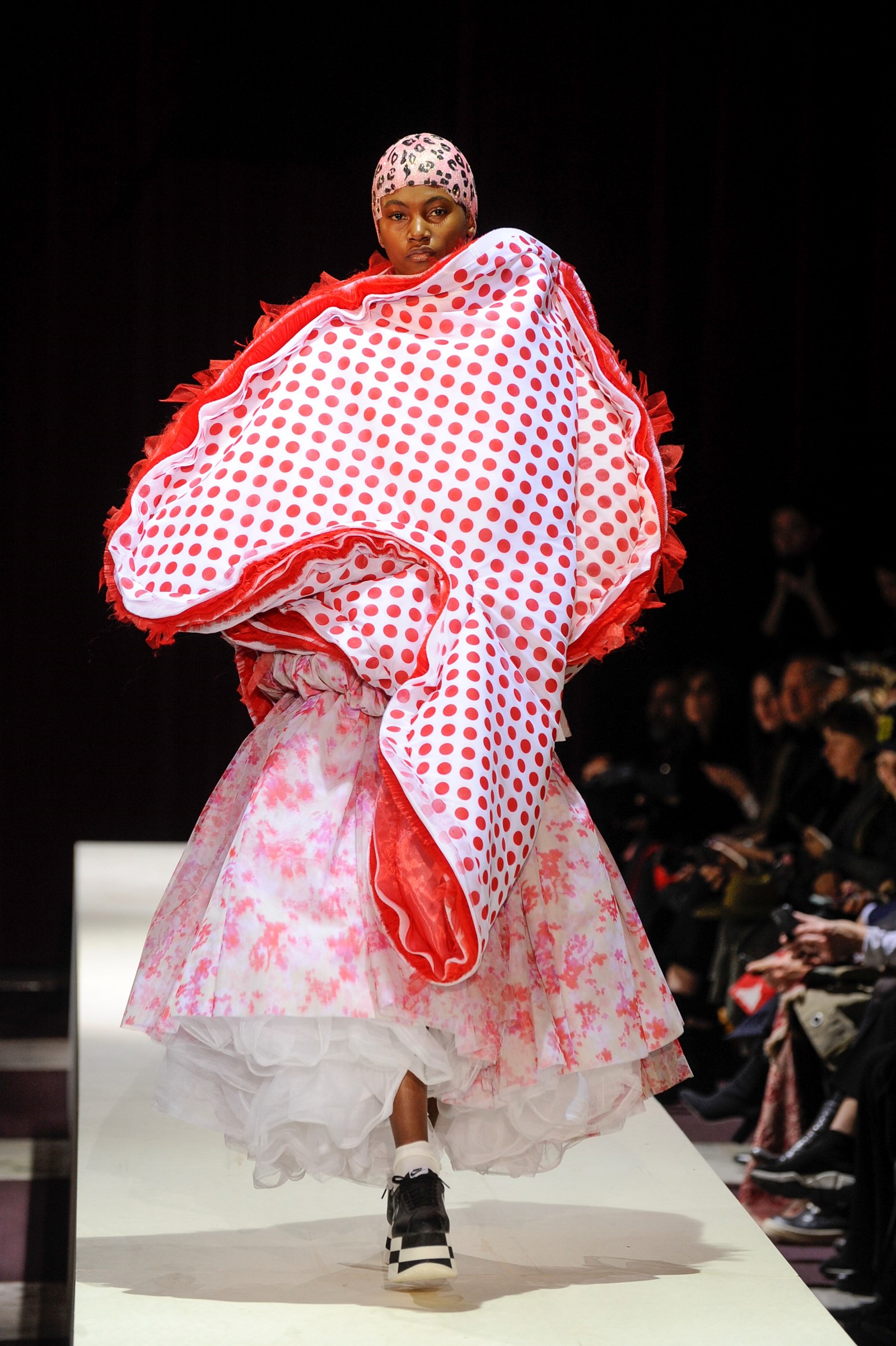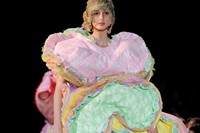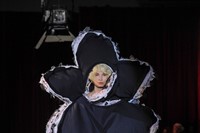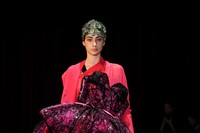After a decade of recession-era normcore and discreet-chic minimalism, unadulterated camp is back in vogue. Yes, that’s right – playful, uninhibited, colourful kitsch is back. If in doubt, switch on your television, where camp is rocket-fuelling the success of Rupaul’s Drag Race, the seemingly endless Real Housewives series and Netflix’s Queer Eye, making superstars of its campy cast and introducing a new vocabulary to its viewers. Can you believe? In fashion, the ironic patronage of ‘bad’ taste has rarely been stronger, with a return to the corporate realness and volcanic hedonism of the 1980s. A shocking pink minidress with 3,000 feathers? Saint Laurent has you covered. 100 layers of orange smocked tulle? Call Molly Goddard. Crystal-monogrammed socks? Go to Gucci.
Camp isn’t just high-gloss vulgarity, though. At the Comme des Garçons show during Paris Fashion Week earlier this month, Rei Kawakubo explored a softer side of the sensibility with a jolly parade of millefeuille fleurs, pillowcase florals, exaggerated ruffles and purple leopard-print plastic, set to the music of Fellini movies and Peter and the Wolf. She declared that the collection had been inspired by the cultural critic Susan Sontag’s 1964 essay Notes on Camp, which helped define and explain a creative movement and sensibility with a 58-point guide. (Sontag believed that as camp is a sensibility, it couldn’t be articulated in a formal essay.)
Kawakubo echoed Sontag’s claim that camp is not simply horrific over-exaggeration or bad taste. “On the contrary,” the designer uncharacteristically elaborated, “camp is really and truly something deep and new and represents a value we need. For example, there are so many so-called styles such as punk that have lost their original rebel spirit today. I think camp can express something deeper, and give birth to progress.”
“So many so-called styles such as punk that have lost their original rebel spirit today. I think camp can express something deeper, and give birth to progress” – Rei Kawakubo
Sontag described the essence of camp as its love of the “unnatural: of artifice and exaggeration.” She distinguishes it from the objective seriousness of kitsch, which usually refers to the object itself, compared to camp, which is a mode of performance and sees everything in quotation marks. “To perceive camp in objects and persons is to understand being-as-playing-a-role,” she wrote. “It is the farthest extension, in sensibility, of the metaphor of life as theatre.” Her list of camp classics includes the 1911 novel Zuleika Dobson, Art Nouveau Tiffany lamps, Aubrey Beardsley drawings, Swan Lake, the clothes of 1920s flappers, Busby Berkeley’s musical numbers from the 1930s and Josef von Sternberg’s films starring Marlene Dietrich.
It is this spirit of extravagance and the triumph of the epicene style that are the hallmarks of camp. The convertibility of “man” and “woman” or “person” and “thing”, for example. Sontag believed that all style that is artifice is, ultimately, epicene: “Life is not stylish. Neither is nature.” When it does look to nature, it heavily stylises it, like the fin de siècle cast-iron orchid stalk entrances to the Paris Métro designed by Hector Guimard, or Antoni Gaudí’s Sagrada Familia Cathedral in Barcelona, a towering spectacle covered in stone leaves. It’s a sensibility that is epitomised by the words of Oscar Wilde’s Mrs Cheveley: “To be natural is such a very difficult pose to keep up.”
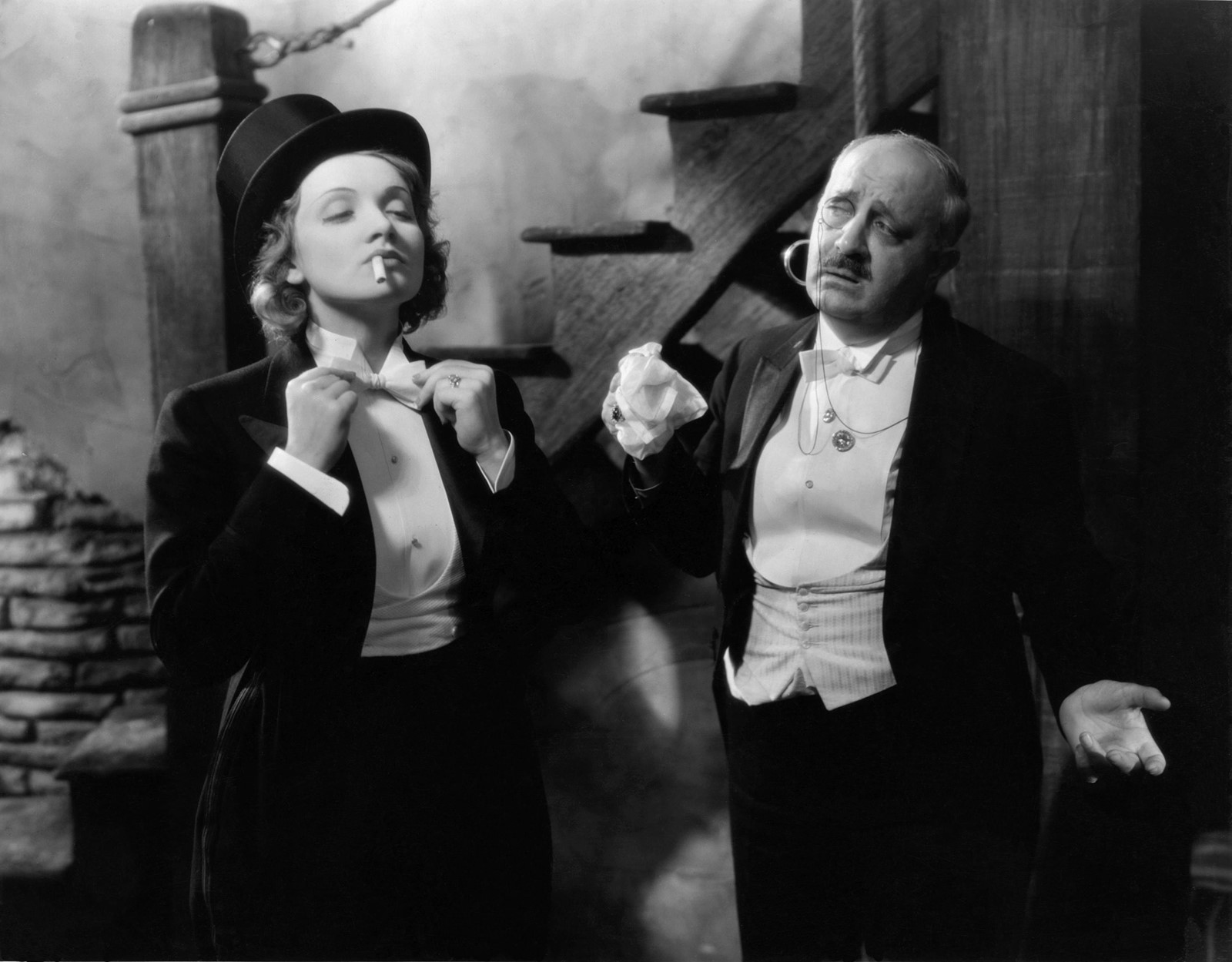
As someone who has been described as camp since infancy, I for one couldn’t be more pleased about the arch return of camp. Growing up on a diet of pop culture and pomp, I was never one to shy away from the theatrical or the overt. It didn’t help that I figure skated from the age of seven and insisted on horse riding in a spandex leotard. Indian weddings provided a warped perception of ceremony and splendour, feeding a nascent taste for grand gestures, intense colour and sparkle. And as a child, before anyone could finish saying the word ‘spice’, I’d pop my hip, lower my chin and wheel around my pointed hand with a delicately suspended pinky. It seems somewhat ridiculous now even to me, but I was dead serious then.
“Camp taste supervenes upon good taste as a daring and witty hedonism. It makes the man of good taste cheerful, where before he ran the risk of being chronically frustrated. It is good for the digestion” – Susan Sontag
Although the word “camp” was often attributed to me, it wasn’t entirely accurate and often confused with “gay” or “effeminate”. The two concepts are connected but not mutually exclusive. While it’s true that the gays have always had a sharpness for aesthetics as a solvent of morality, as Sontag explains, camp taste is not exclusively queer taste, but there is no doubt a peculiar affinity and overlap. “Not all liberals are Jews, but Jews have shown a peculiar affinity for liberal and reformist causes. So, not all homosexuals have camp taste. But homosexuals, by and large, constitute the vanguard – and the most articulate audience – of camp,” she writes. Just as camp as feminine men, however, is anyone who consciously plays up a camp shtick of gender norms, from butch women to hyper-feminine ones such as Nicki Minaj and he-man men like Daniel Craig.
In the age of social media, too, the glorification of character couldn’t be more prevalent. Our personal brands and personalities are exhibited and performed for an audience and our clothes become frameworks for understanding that. That’s why a return to camp could mean a return to individuality and playfulness, a concept that has somewhat suffered as our wardrobes become more casual and less varied and quite literal visual assertions of branding and identity. The objects we consume and project campiness onto, too, are increasingly endless, providing a library of cultural moments to remix and re-contextualise into GIFs or memes. That’s where a brand like Gucci exceeds — overnight, an image of a model with a Makinarium-produced severed head or baby dragon can become a camp classic.
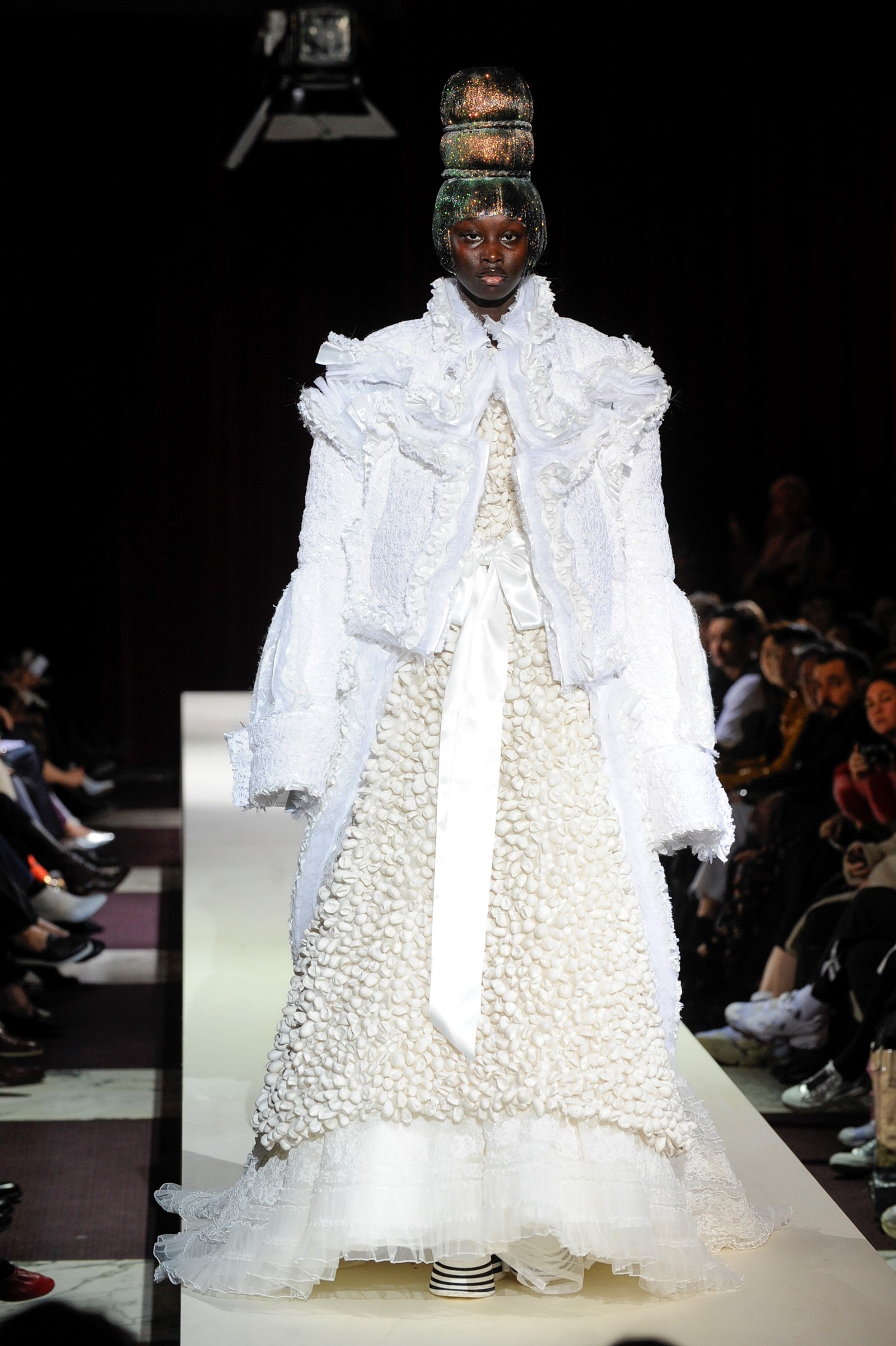
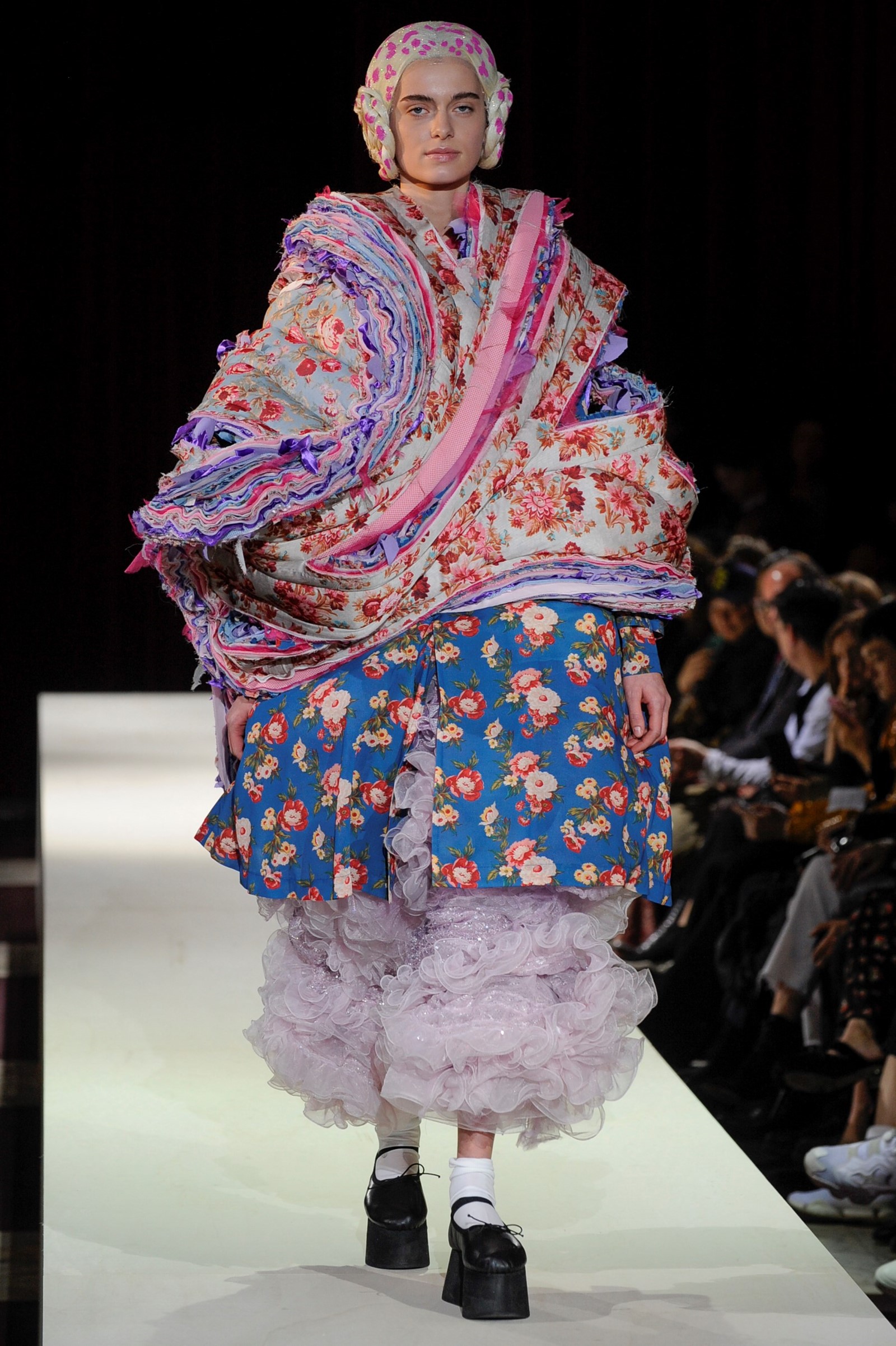
Kawakubo is right – camp is a value we need. In an increasingly heavy political landscape, camp is vital in destabilising and subverting an oppressive and absolutist power and empowering an audience to challenge authority. What is good taste or considered proper goes out of the window. Just think of the roll call of hilariously witty placards at recent political marches around the world, or the comedic impersonations of President Trump by Peter Serafinowicz, and of Angela Merkel and Nicola Sturgeon by Tracey Ullman. What is deeply serious for one viewer is deeply superficial for another, and those nuanced contributions to a wider landscape is what makes camp so important and enjoyable.
Above all, though, it’s a naivety and joyousness that is so native to camp that makes the canon of it – from feather-trimmed tulle ruffles to over-contoured makeup to a hyper-filtered selfie – such a pleasurable sensibility and satisfying antidote to the painful solemnity. As Sontag writes, “camp taste supervenes upon good taste as a daring and witty hedonism. It makes the man of good taste cheerful, where before he ran the risk of being chronically frustrated. It is good for the digestion.”
